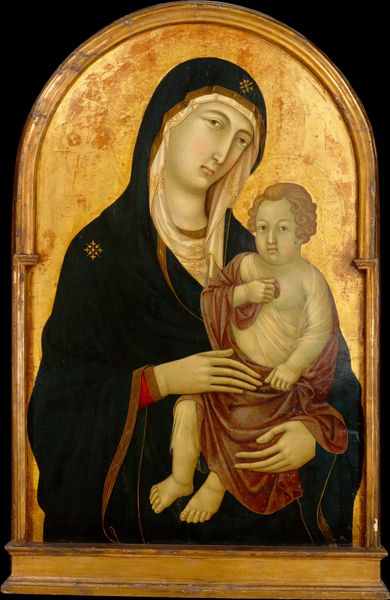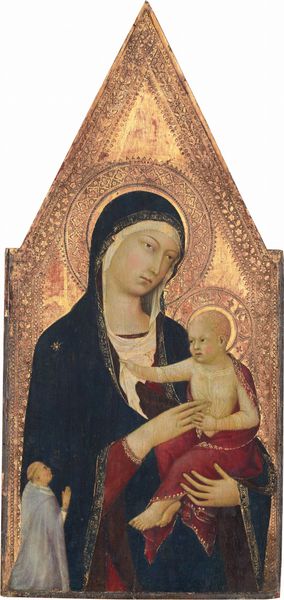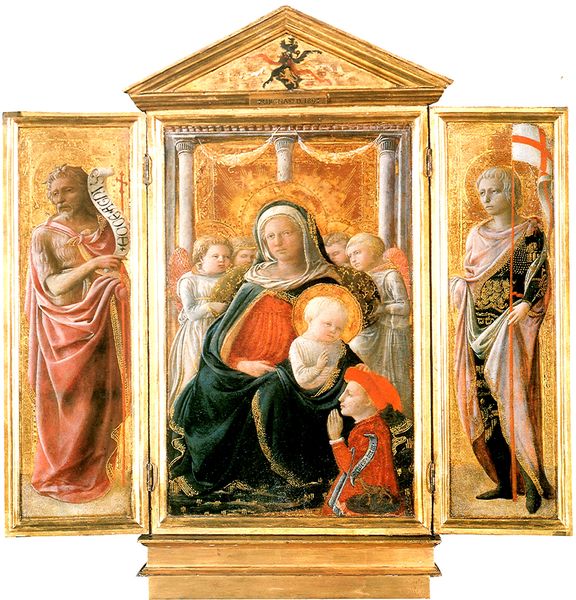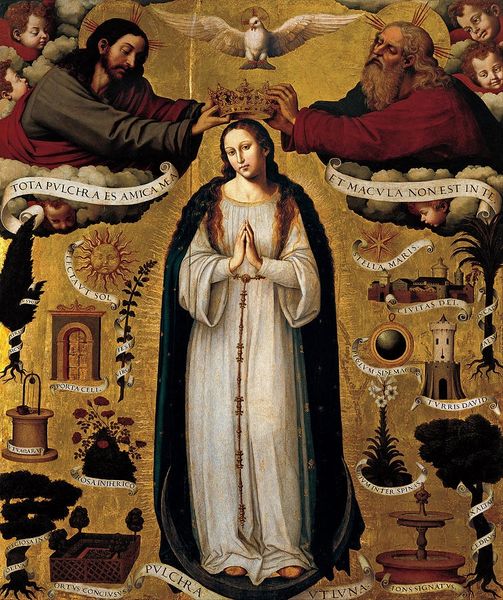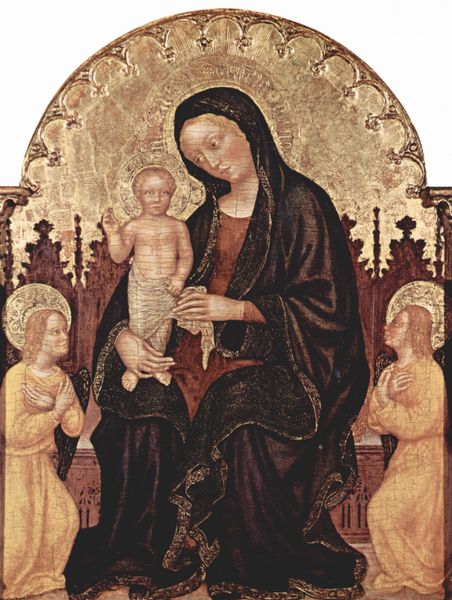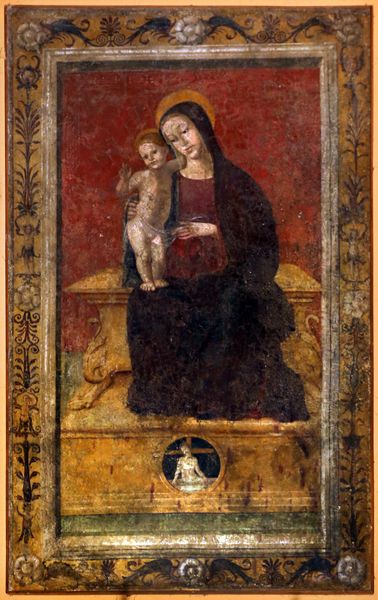
panel, tempera, painting, gold
#
portrait
#
medieval
#
panel
#
narrative-art
#
tempera
#
painting
#
book
#
gold
#
gothic
#
figuration
#
history-painting
#
italian-renaissance
#
miniature
Dimensions: Overall, with shaped top and engaged (modern) frame, 19 x 8 in. (48.3 x 20.3 cm); painted surface 15 1/2 x 7 1/2 in. (39.4 x 19.1 cm)
Copyright: Public Domain
Lippo Memmi painted this representation of Saint Clare sometime in the early to mid-1300s, using tempera and gold leaf on a wood panel. Looking closely, you can see the artist's handiwork. The traditional technique of tempera painting, using pigments bound with egg yolk, gives the surface a distinctive matte finish and allows for fine detail. The gold leaf, meticulously applied to the background and frame, speaks to the preciousness of the image, meant to evoke the divine. But it also speaks to the economic system that supported its production. The mining, refining, and application of gold were all labor-intensive processes. The value of the materials themselves, not to mention the artist's skill, would have made this a costly commission. Considering the materials and the making helps us to understand the significance of this artwork beyond its religious subject. It’s a window into the material culture of the 14th century.
Comments
No comments
Be the first to comment and join the conversation on the ultimate creative platform.

